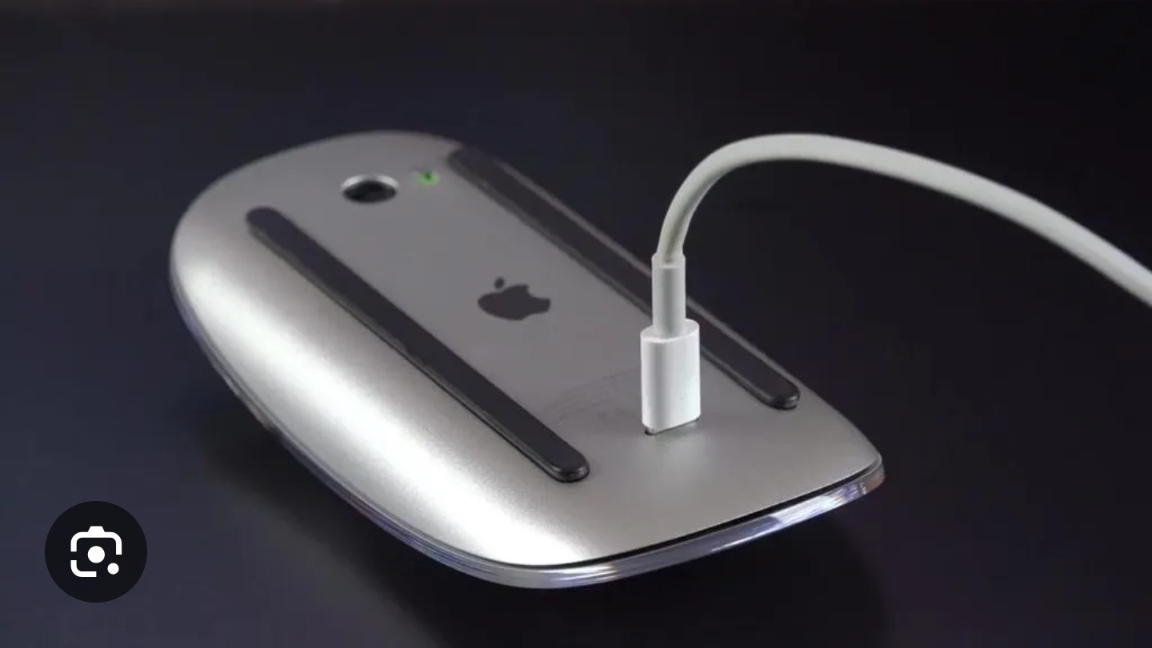
Counterpoint.
The number of people that defend this obvious design flaw/slight is incredible.
I don’t think anyone actually thinks this is a good design, but there are people who will say that the 2 min fast charge time is a manageable frustration. But it is a frustration.
My bigger gripe is the ergonomics, or lack thereof. I don’t understand people who like the feel of that mouse.
I used to work as a web developer and obviously we had Apple Macs because everyone knows you can’t make websites on Windows computers it’s literally impossible.
Anyway, everyone ended up getting different mice because they are the worst mice ever made, by anyone ever since the ball mouse, and quite possibly even before. I do like the virtual scroll wheel but everything else about them is awful. Also I’ve had wireless mice since, and every single one of them has had better battery life than the Apple mouse.
I would compare it to taking the case off your phone, placing it screen down, and dragging it across the desk. Flat small and thin.
Well, indirectly the Magic Mouse does control screen time. Can’t be doomscrolling when you can’t scroll at all while the mouse is charging.
What on earth is that?
It’s their Magic Mouse. You can’t use it while it’s charging (since its port is on the bottom) and it also has questionable ergonomics since it’s very flat and thin (but most mice also have questionable ergonomics as well so there’s that)
Apple always tried to have their mouse fit tiny children‘s hands and adults, which of course means that they’re uncomfortable for both.
Their dedication to small product portfolios forbids them to have two different devices for this.
Not only that, if you engineer a way to be able to use the mouse while it is plugged in you find that the mouse is software locked to be unusable at all while charging.
Not only that, if you engineer a way to be able to use the mouse while it is plugged in you find that the mouse is software locked to be unusable at all while charging.
Note, I am not defending the design, it’s stupid.
Lots of devices, this mouse included, charge very quickly at low charge. Another commentator said two minutes of charging yields two days of charge. Plug in your mouse, go get a cup of coffee, and when you’re back the mouse is fine.
I don’t doubt this. On a recent flight I realized I forgot to charge my noise cancelling headphones. I plugged them into my power bank for about five minutes before the plane took off and then they easily lasted the entire 2.5 hour flight. With plenty of charge left over.
If you want to get to 100% charge you have to wait a while so the battery doesn’t get damaged, but if you just want to use a device they can often charge pretty damn fast.
If you want comfortable, you don’t get a mouse. You get a trackball that fits your hands well. I use an Elecom Huge and I love it. Especially having 7680 pixels of horizontal resolution (1080p side monitors and 4k center screen). Going from edge to edge with a single flick is so damn satisfying.
As someone who dailies a trackball, mouse, and trackpad: it depends on the setup. Trackpad is nice for when I’m on my laptop with just one screen. Mouse is nice with two high resolution displays and gaming. And at work I exclusively use a trackball across a triple monitor setup.
Trackpads are finicky. They need to have good hardware and software support, and as far as I’m aware, Apple is seemingly the only vendor capable of both. So naturally I only ever prefer it on my test macs for work.
One of my Lenovos, I’d almost prefer to rub the g-spot because of the clunky trackpad
What’s even worse is that screen time for children is actually, directly, flagrantly broken. It resets itselfs regularly. This is a known thing for parents who get into habits of re-enabling it twice daily to ensure it’s likely to be on when their kid exceed a quota. Apple, of course, ignores it. I doubt a single person on the team that owns the feature actually uses it OR they are under instructions to leave it broken to ensure digital habits get built in children. Get them started in the crack early.
I hate the parental controls so so much.
I’ve never found Screen Time all that useful, for the same reason as the article - it can’t distinguish good usage from bad usage. Screen Time only counts time - but it can’t tell which minutes is doomscrolling and which are used more positively.
Maybe that’s an application for Apple Intelligence, although there would be some pretty big privacy issues there.
Screen Time is also not helped by only working on Apple devices. It can’t account for time spent using using non Apple devices like TVs, consoles, PCs with other operating systems etc. it might have been more useful if there was an external API screen time software for other platforms could report to.
Apple has to keep it generic or the software providers will have a fit. It cannot start making judgments that 9 hours of Facebook is bad, or Meta would throw a fit.
And Apple will never just let users decide that. They consider it anti-user to force us to make choices.
And Apple will never just let users decide that. They consider it anti-user to force us to make choices.
Apple lets you set app, category (“Social” is a category), and website-specific limits, though, so you can absolutely make that choice.
Can you control which categories count toward screen time? If so I take it back.
Yes - you can set multiple daily limits (they reset at midnight and that can’t be changed), and each one can apply to one or more apps, categories, or websites. You can also select almost all the apps in a category and omit a couple, but then future apps in that category won’t be limited automatically. And you can choose specific apps to never be limited.
So you could set a 3 hour limit for Social apps, Games, a couple individually chosen other apps, and some specific websites, as well as a 5 minute limit toward the Facebook app and facebook.com, if you wanted.
If you mean the screen time tracking, then I don’t know think you can do that, but it gives you both your overall time as well as breakdowns by category (at least the top few categories), so you can do the math on your own.
I think it’s still important to measure “good usage,” because whether you really need to shop for that dress or not, it’s still sedentary time and that affects your body.
But it does seem like they could do a better job of knowing when you are actually sitting still looking at the screen. Google maps time while driving shouldn’t count for anything at all.
I’m currently using the iOS 18 beta and - during an earlier beta (3 I think) - Screen Time was broken in that it didn’t let you change the settings or extend a session, it would just crash.
This actually made the feature useful! You could no longer just click a button to skip the warnings, you had to actually stop when the time was up. Sure it was a bit annoying but that’s the whole point.
So yea, I’ve been thinking of getting my partner to change the PIN for it so I can’t skip the warnings in the future.
It’s not a bad feature, it’s just often poorly configured and badly implemented.
Us students (16 yo) managed to circumvent Apples MDM restrictions multiple times. Finding each way took us maybe a minute on average. That’s just pathetic.
sounds more like an Apple skill issue
You could also change the PIN to something random that you’ve written down somewhere inconvenient, or stored in a password manager.
Man I’ve been struggling with it and thought that I am doing something wrong.
Onesec Has been a great tool for helping me be more intentional with my screen time.










